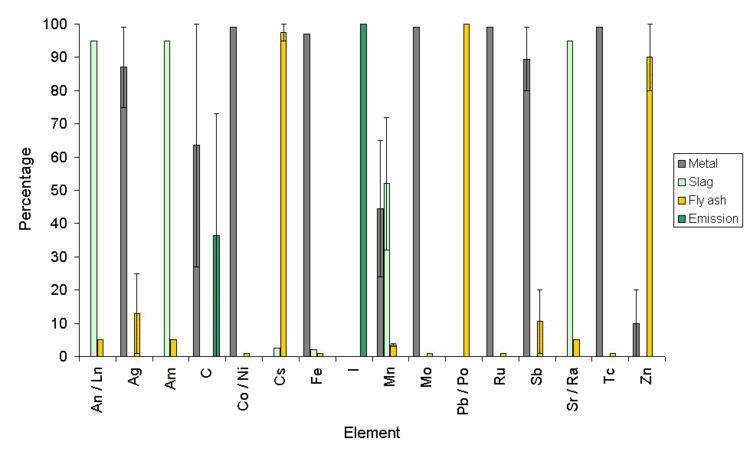 | ||
Radioactive scrap metal is created when radioactive material enters the metal recycling process and contaminates scrap metal.
Contents
Overview
A "lost source accident" occurs when a radioactive object is lost or stolen. Such objects may end up in the scrap metal industry, if people mistake them for harmless bits of metal. The International Atomic Energy Agency has provided guides for scrap metal collectors on what a sealed source might look like. The best known example of this type of event is the Goiânia accident, in Brazil.
While some lost source accidents have not involved the scrap metal industry, they are still good examples of the likely scale and scope of a lost source accident. For example, the Red Army left sources behind in Lilo. Another case occurred at Yanango where an 192Ir radiography source was lost and at Gilan, Iran a radiography source harmed a welder.
Radioactive sources have a wide range of uses in medicine and industry, it is common for the design (and nature) of a source to be tailored to the application so it is impossible to state with confidence what the "typical" source looks like or contains. For instance, antistatic devices include beta and alpha emitters: polonium containing devices have been used to eliminate static electricity in such devices as paint spraying equipment. An overview of the gamma sources used for radiography can be seen at Radiographic equipment, and it is reasonable to consider this to be a good overview of small to moderate gamma sources.
Examples
Physical and chemical compositions
The cleanup operation for the Goiânia accident was difficult both because the source containment had been opened, and the radioactive material was water-soluble.
In 1983, a different incident in Mexico wherein cobalt-60 was spilled in an otherwise similar exposure led to a very different pattern of contamination, since the cobalt in such a source is normally in the form of cobalt metal alloyed with some nickel to improve the mechanical properties of the radioactive metal. If such a source is abused, then the cobalt metal fragments do not tend to dissolve in water or become very mobile. If a cobalt or iridium source is lost at a ferrous metal scrapyard then it is often the case that the source will enter a furnace, the radioactive metal will melt and contaminate the steel from this furnace. In Mexico, some buildings have been demolished because of the level of cobalt-60 in the steel used to make them. Also, some of the steel which was rendered radioactive in the Mexican event was used to make legs for 1400 tables.
Source melting
In the case of some high-value scrap metals it is possible to decontaminate the material, but this is best done long before the metal goes to a scrap yard.
Ferrous scrap
In the case of a caesium source being melted in an electric arc furnace used for steel scrap, it is more likely that the caesium will contaminate the fly ash or dust from the furnace, while radium is likely to stay in the ash or slag. The United States Environmental Protection Agency provide data about the fate of different contaminating elements in a scrap furnace. Four different fates for the element exist: the element can stay in the metal (as with cobalt and ruthenium); the element can enter the slag (as in lanthanides, actinides and radium); the element can enter the furnace dust or fly ash (as with caesium), which accounts for around 5%; or the element can leave the furnace and pass through the bag house to enter the air (as with iodine).
Aluminium scrap
It is normal to place silicon, aluminium scrap and flux in a furnace. This is heated to form molten aluminium. From the furnace three main streams are obtained, metal product, dross (metal oxides and halides which are skimmed off the molten metal product) and off gases which go to the baghouse. The cooled waste gasses are then allowed out into the environment.
Copper scrap
It is normal that good-quality scrap copper, such as that from a nuclear plant, is refined in one furnace before being refined further in an electrochemical process. The furnace generates impure metal, slag, dust and gases. The dust accumulates in a bag house, while the gases are vented to the atmosphere. The impure metal from the furnace may be further refined in an electrochemical process.
If the copper refinery includes an electrochemical process after the furnace, then unwanted elements are removed from the impure metal and deposited as anode slime.
